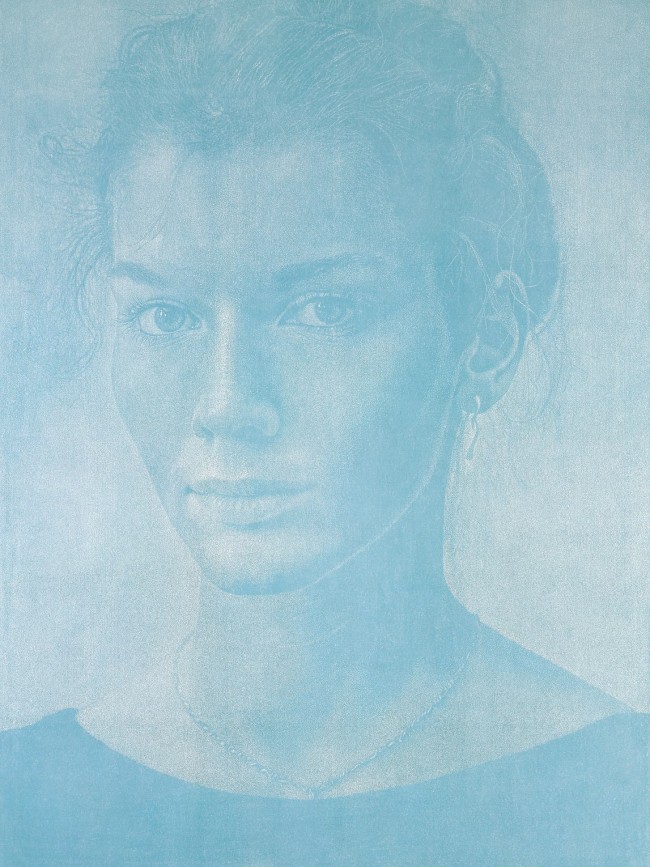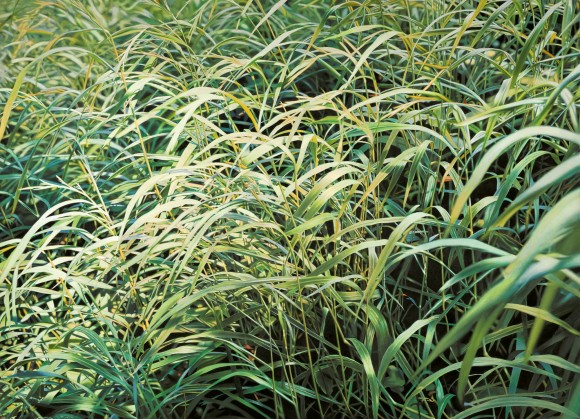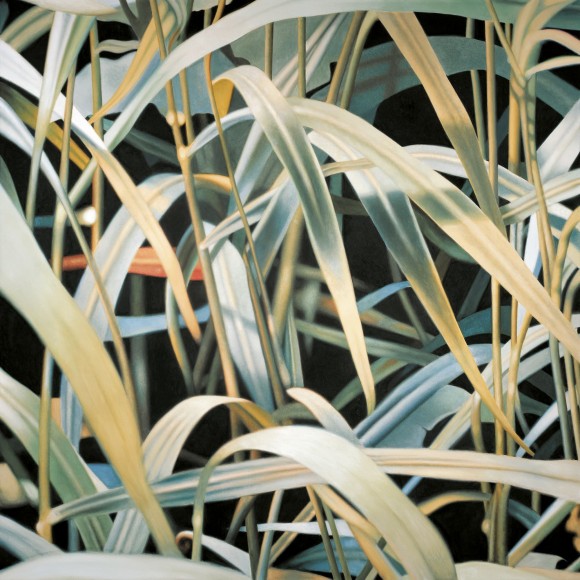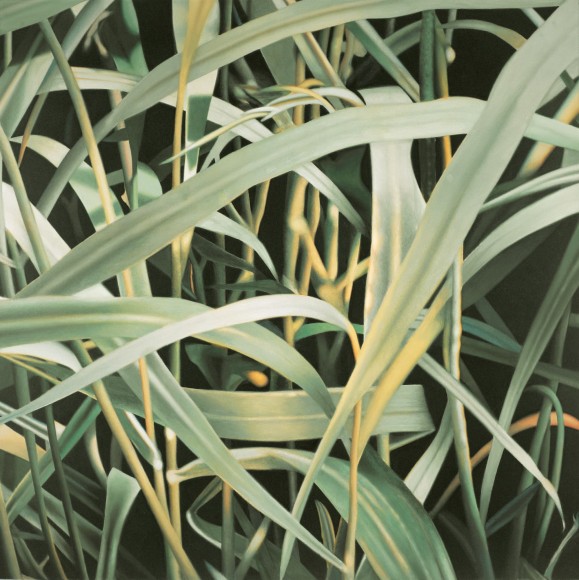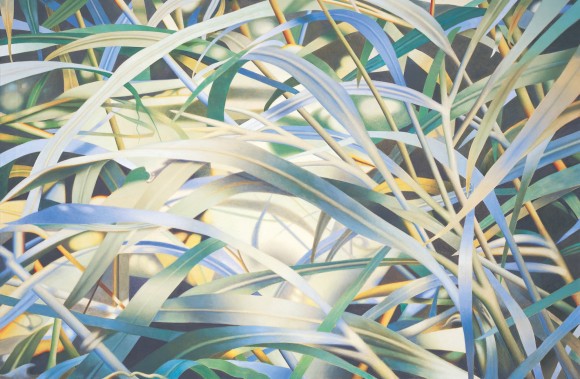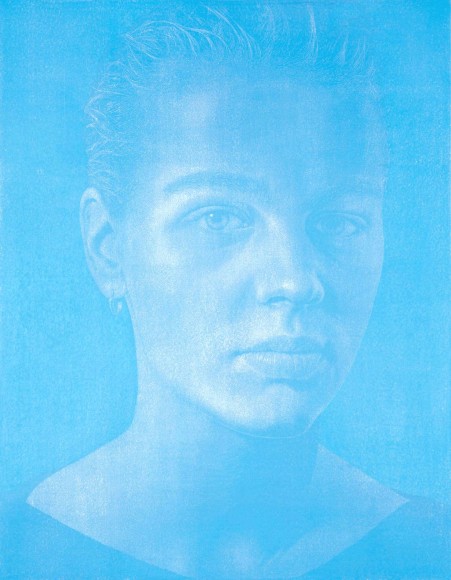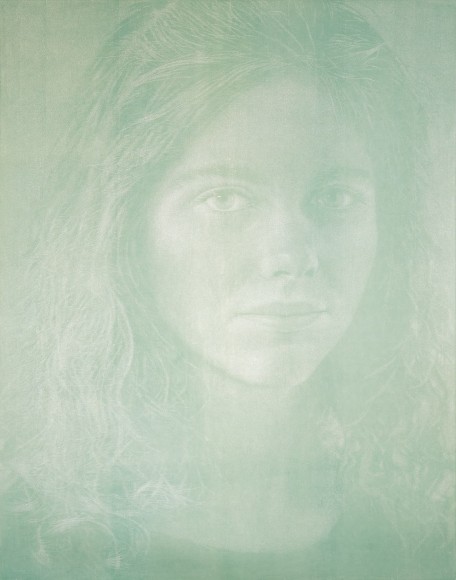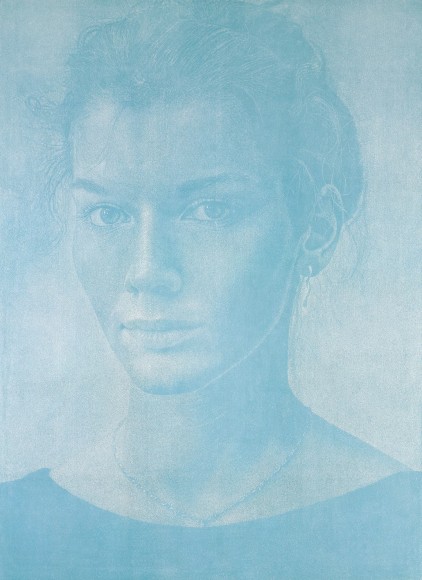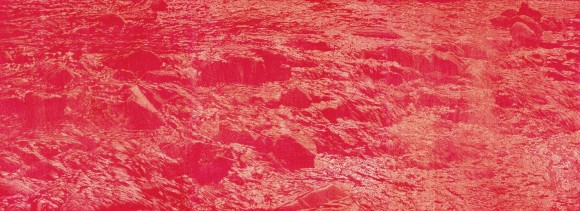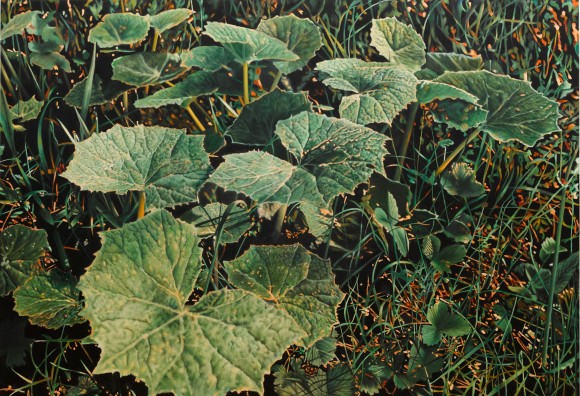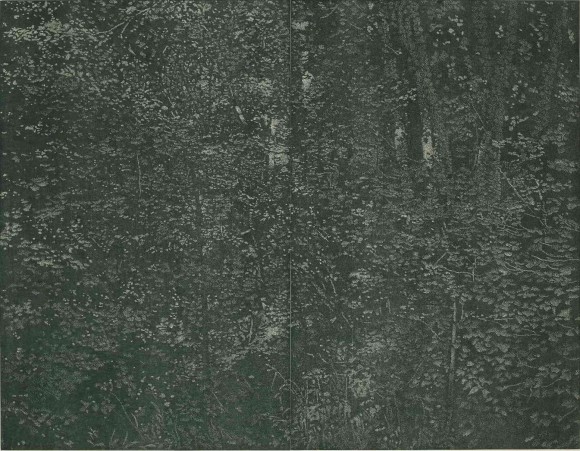Doris, 1989
Holzschnitt / woodcut, 218 x 157 cm
Handabzug 17/18 auf Kumohadamashi Japanpapier von Heizaburo Iwano / Woodcut 17/18 on Kumohadamashi Japanese paper by Heizaburo Iwano, 244 x 184 cm
Türkis verblaut / Turquoise
Museum Franz Gertsch, Burgdorf
© Franz Gertsch AG
Franz Gertsch
Portraits and nature pieces
22.03.2025 – 31.08.2025
During this exhibition period, large-format paintings and woodcuts by Franz Gertsch can be seen at the Museum Franz Gertsch. The exhibition focuses on portraits and nature pieces.
In the first room, the four Gräser (Grasses) paintings from the 1990s are displayed, with which Gertsch resumed painting after a several-year break during which he exclusively developed his new woodcut technique. “Gräser I” (1995/96) shows a strongly enlarged section of the reed-like grass (wood brome) from his garden in Rüschegg. For “Gräser II” (1996/97), “Gräser III” (1997) and “Gräser IV” (1998/99), the artist used sections from his own first painting as templates. Gertsch pursued a conceptual approach to his own painting in this series, by reworking the first painting, enlarging it, and playing with sections and exposures.
The second room of the exhibition is dedicated to large-format portraits alongside Schwarzwasser woodcuts. The models for the portrait woodcuts on display here, “Natascha IV” (1987/88) “Dominique” (1988), “Doris” (1989), and “Silvia” (2001/02), were young women in their early 20s from Franz Gertsch’s surroundings and circle of acquaintances. In the mid-1980s, Gertsch developed his own type of large-format coloured woodcut that differed from his early ventures in this technique in several essential points. While he retained this technique’s classic black linearity in his first woodcuts and worked with a system of black contours, the later woodcuts are characterized by a system of so-called ‘light points’—the depiction of the motif results from the interaction of the print’s bright spots. As in his paintings, Franz Gertsch proceeded here from a photographic model, translating the light from a colour slide projection while working the lime wood printing block with a cutter into a system of incised dots and untreated areas. Franz Gertsch and his printing team finally printed a small edition of his woodcuts by hand on Japanese handmade paper. At the start of this phase, the artist worked on several blocks for a subject and then printed the different motif and colour blocks over each other. This can be seen in our exhibition in ‘Natascha IV’ and ‘Silvia’. In the case of other woodcuts, for example ‘Dominique’, he printed with one block and only one colour, thus reaching the final picture.
Other paintings and woodcuts by the artist are exhibited in the extension building.
The exhibition was curated by Anna Wesle.
In the first room, the four Gräser (Grasses) paintings from the 1990s are displayed, with which Gertsch resumed painting after a several-year break during which he exclusively developed his new woodcut technique. “Gräser I” (1995/96) shows a strongly enlarged section of the reed-like grass (wood brome) from his garden in Rüschegg. For “Gräser II” (1996/97), “Gräser III” (1997) and “Gräser IV” (1998/99), the artist used sections from his own first painting as templates. Gertsch pursued a conceptual approach to his own painting in this series, by reworking the first painting, enlarging it, and playing with sections and exposures.
The second room of the exhibition is dedicated to large-format portraits alongside Schwarzwasser woodcuts. The models for the portrait woodcuts on display here, “Natascha IV” (1987/88) “Dominique” (1988), “Doris” (1989), and “Silvia” (2001/02), were young women in their early 20s from Franz Gertsch’s surroundings and circle of acquaintances. In the mid-1980s, Gertsch developed his own type of large-format coloured woodcut that differed from his early ventures in this technique in several essential points. While he retained this technique’s classic black linearity in his first woodcuts and worked with a system of black contours, the later woodcuts are characterized by a system of so-called ‘light points’—the depiction of the motif results from the interaction of the print’s bright spots. As in his paintings, Franz Gertsch proceeded here from a photographic model, translating the light from a colour slide projection while working the lime wood printing block with a cutter into a system of incised dots and untreated areas. Franz Gertsch and his printing team finally printed a small edition of his woodcuts by hand on Japanese handmade paper. At the start of this phase, the artist worked on several blocks for a subject and then printed the different motif and colour blocks over each other. This can be seen in our exhibition in ‘Natascha IV’ and ‘Silvia’. In the case of other woodcuts, for example ‘Dominique’, he printed with one block and only one colour, thus reaching the final picture.
Other paintings and woodcuts by the artist are exhibited in the extension building.
The exhibition was curated by Anna Wesle.
Veranstaltungen / Events
-
April 2025 -
-
May 2025-
Sun
18.05.
10 AM – 5 PM10 AM – 5 PMInternationaler Museumstag
"The Power of Museums"
-
Sun
25.05.
3:30 PM – 4:30 PM3:30 PM – 4:30 PMSonderführung: Zeichnend durchs Museum
Sonderführung durch die aktuellen Ausstellungen
Mit Manuela Brügger, Künstlerin und Kunstvermittlerin, BA Art Education
-

